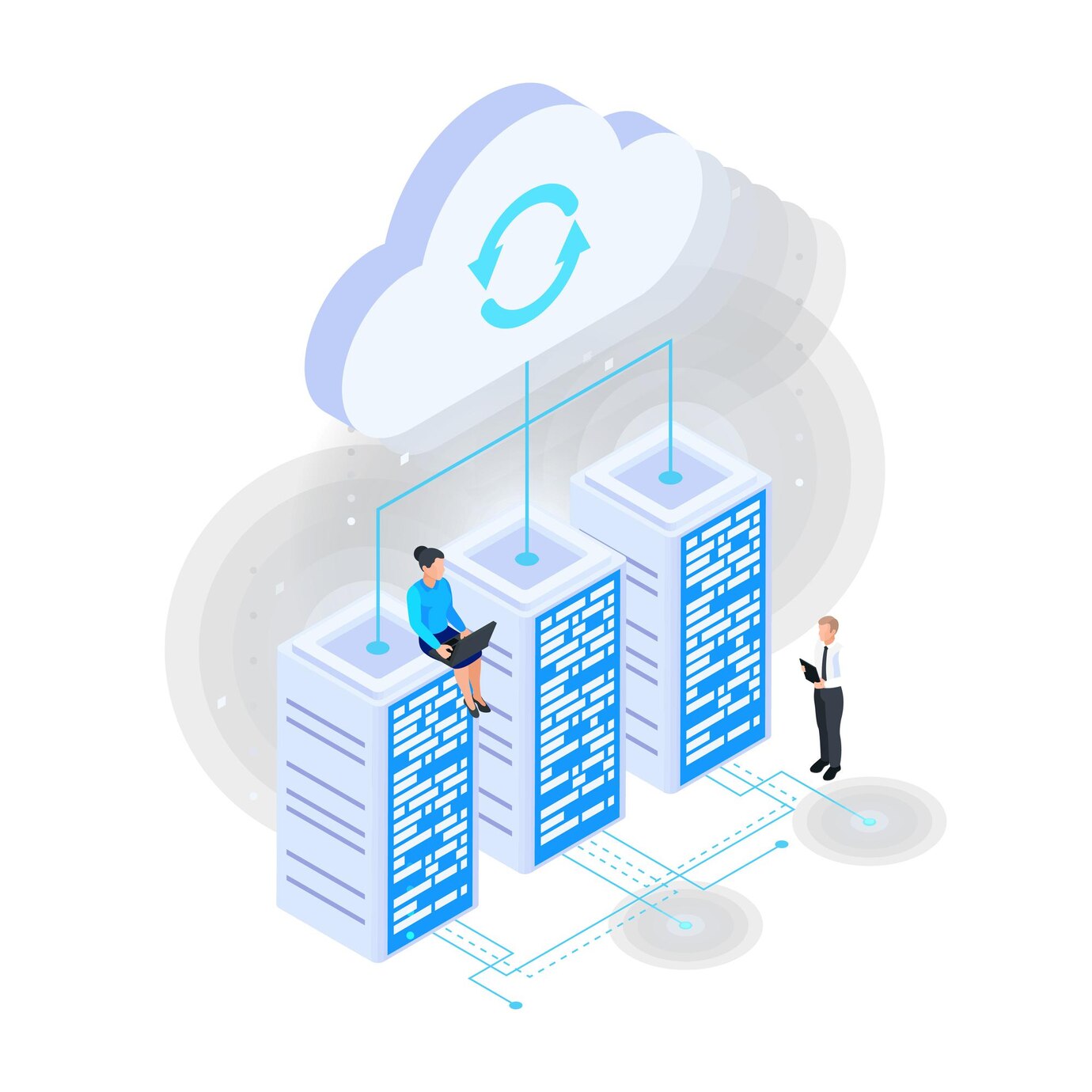Future trends in microservices on AWS
Intro
In our previous blog articles, we studied the essence of microservices architecture and how it differs from monolithic apps, shared a guide on mastering the microservices architecture on AWS, and compiled an integral list of instruments for microservices on AWS.
Today, we switch our focus to what lies ahead for AWS as it continues to grow. Companies now have a better understanding of the benefits that microservices bring and adopt this architecture to support the agility and scalability of their business. Amid this growth, the Touchlane team explores the future of microservices and the AWS trends set to shape 2025.
Evolution of microservices on AWS
Initially, companies built applications as monolithic systems, where all components were tightly connected. This structure made scaling and maintenance difficult. Recognizing these limitations, the industry moved to microservices architecture, which breaks applications into small, independent services. In this type of architecture, each service handles a specific business function, which allows teams to develop and deploy them separately. Such an approach gives organizations more flexibility and resilience in their software systems.
Amazon Web Services responded to this shift and introduced solutions that simplify the development and management of microservices, as seen in the timeline below.
2014 / Emergence of AWS Lambda
Lambda was one of the first serverless computing services. It lets developers run code when events occur without handling infrastructure and makes building microservices easier. As an advantage, the usage of Lambda helps teams cut down on operational work.
2015-2018 / Introduction of Amazon ECS & EKS
As containerization became standard in microservices architecture, AWS introduced Elastic Container Service (ECS) and Elastic Kubernetes Service (EKS) to promote quick deployment of microservices in containers.
2018 / Launch of AWS App Mesh
Since microservices adoption increased, managing service-to-service communication has become more complex. AWS launched App Mesh as a solution to this. App Mesh is a service mesh that improves observability, traffic control, and security across microservices.
2022 / Debut of Amazon VPC Lattice
This service improved inter-service communication by offering a unified networking layer for microservices across AWS environments.

What drives microservices adoption on AWS
The widespread adoption of microservices on AWS is driven by several business and technical factors:
- Faster time-to-market – Decoupled services allow teams to independently create and deploy various features, as well as cut down development cycles
- Improved scalability – With microservices, distributed components are able to scale as required, which results in better use of cloud resources
- Resilience and fault isolation – A failure in one microservice does not affect the whole app, boosting overall system reliability
- Cloud-first ecosystem – AWS provides a broad selection of managed services, such as databases and monitoring tools, that support microservices architectures.
Current statistics and future outlook
Despite strong competition, AWS holds over 33% of global cloud computing revenue in 2024. Its closest competitor – Microsoft Azure – claims a 20% market share.
AWS continues to drive significant revenue for the parent company – Amazon’s cloud division now generates $100 billion in annual revenue. This is a substantial growth over the $90.7 billion number in 2023. Compared to 2020, AWS’ revenue has grown by $55 billion.
Growth is expected to continue in 2025 to reinforce AWS’s influence on cloud infrastructure. As the company expands its offerings, its advancements will shape how businesses approach microservices in the coming years.
Microservices trends for AWS to look out for in 2025
1.
Serverless and microservices – The perfect match
Serverless computing refers to a cloud model where the provider controls infrastructure, so developers can focus on writing code. It removes the need to manage servers, provision resources, or scale manually, thus, reducing costs and improving efficiency. Key components include Functions-as-a-Service (FaaS), event sources, API gateways, managed databases, and storage services.
Combining serverless computing with microservices results in a powerful and efficient way to build applications, known as serverless microservices. This approach takes advantage of the strengths of both technologies.
Where it is used / Retailers use serverless microservices for dynamic pricing updates. Each microservice processes real-time data and adjusts product prices through serverless platforms like AWS Fargate.
Stats / By 2025, Gartner predicts that 75% of all data will come from sources outside traditional data centers and cloud systems. With many companies adopting serverless and microservices architectures, serverless is a crucial AWS trend for businesses that seek efficiency and flexibility.
How your business can benefit from it / A serverless microservices architecture reduces infrastructure work, speeds up deployment, and adapts to market shifts. Its pay-per-use model directs budgets to innovation, while strong failure recovery keeps systems reliable. This approach cuts costs and strengthens competitiveness.

2.
AI and automation in microservices management
Artificial intelligence continues to be a buzzword – it seems to permeate every sector of technology. Microservices grow more complex, and they employ AI and its subset, machine learning, to support scalability and system management. AI and automation predict system load, allocate resources before demand spikes, and reduce manual effort. As a result, businesses can improve system reliability and scale more effectively.
Where it is used / Netflix moved from a monolithic architecture to microservices for better scalability and resilience, using AI-driven DevOps tools to support continuous integration and deployment.
Stats / While it is hard to find definitive figures for the use of AI in microservices, the overall market for artificial intelligence is huge. Depending on the source, it can reach from $190 billion to $243.27 billion in 2025.
How your business can benefit from it / AI and automation in microservices management automates routine tasks, reduces costs through better resource allocation, and levels the playing field for SMEs against larger competitors. AWS’s AI investments make these technologies more accessible. Implementing them improves operations and strengthens market position.

3.
Security and сompliance in microservices
The shift towards microservices architecture introduces new security and compliance challenges, such as increased attack surface, inter-service communication risks, API security, and more. Protecting your application against these threats requires integrating development, security, and operations – known as DevSecOps.
DevSecOps builds security into every stage of software development as a core principle. In microservices, this approach applies strict security assessments to each service, reducing vulnerabilities across the application.
Best practices for safeguarding microservices on AWS include:
- Infrastructure as Code (IaC). Utilize AWS CloudFormation to define and provision infrastructure resources in a consistent manner
- Automated security testing. Add automated security checks to your CI/CD pipelines with tools like AWS CodePipeline
- Adopt the principle of least privilege. Grant only the necessary permissions to microservices using AWS Identity and Access Management (IAM)
- Monitor and log activities. Continuous monitoring detects suspicious behavior early. Employ AWS CloudTrail and Amazon CloudWatch to track microservices activities
In 2025, AI-driven threat detection with Amazon Macie is also establishing itself as a security practice for microservices.
Where it is used / Kasasa, a wholesale financial services company handling sensitive data for community financial institutions, sought a secure, automated way to identify and protect critical information. To strengthen its cloud security, Kasasa adopted Amazon Web Services (AWS) solutions, including Amazon Macie, which detects and safeguards sensitive data using machine learning. These tools helped Kasasa reinforce data security and build trust with its customers.
Stats / At least 41% of organizations use a multi-account strategy in AWS to manage security across multiple accounts.
How your business can benefit from it / Adopting DevSecOps strengthens security by addressing risks early. It protects assets, supports regulatory compliance, reduces legal exposure, and improves operational efficiency through automation. In addition, it also signals a strong commitment to security, which builds trust with clients and partners and opens doors to new business opportunities.

4.
Service mesh and observability
A service mesh is a software layer that manages communication between containerized microservices. As applications grow, tracking performance becomes difficult. A service mesh adds monitoring, logging, tracing, and traffic control without modifying the service code, which allows it to operate across networks and service management systems.
Modern applications consist of small, independently deployable microservices. Teams can build their own services using different languages and tools, but these services must communicate for the application to function. Performance depends on fast, reliable communication between services. Monitoring across services is difficult due to the distributed nature of the system. And as applications grow, managing communication becomes even more complex.
Two main factors drive service mesh adoption:
- Service-level observability
With more services running, developers struggle to understand dependencies and interactions. They need clear visibility into how services communicate at the application layer. - Service-level control
Administrators need to define which services interact and what actions they take. Controlling behavior, policies, and interactions is critical for security and regulatory compliance.
Where it is used / The Pokémon Company International used AWS App Mesh as the control plane to gain precise control over network traffic and support zero-downtime deployments. The architecture introduced blue/green deployments, with AWS App Mesh routing traffic between service versions based on API headers. This approach allowed players to access the latest updates without major service interruptions while reducing operational complexity.
Stats / Gartner estimates that by 2025, 85% of organizations will prioritize cloud adoption. This further increases microservices usage and highlights the growing need for service mesh solutions to manage their complexity.
How your business can benefit from it / A service mesh offers detailed monitoring and observability. It provides visibility into service health, performance, and behavior. This improves troubleshooting and performance tuning. It also strengthens security with traffic encryption and authorization policies that protect data confidentiality and integrity.

5.
Multi-cloud and hybrid deployments
Companies across various industries constantly rely on multi-cloud and hybrid cloud strategies to deploy microservices. This approach uses services from different providers and blends public and private cloud infrastructures to improve flexibility, scalability, and resilience.
For example, a company may run customer-facing applications on a public cloud for scalability while storing sensitive data on a private cloud to maintain control and compliance. This approach helps businesses balance performance, cost, and security.
Where it is used / AWS recognizes this trend and actively supports multi-cloud and hybrid strategies. It offers solutions like Amazon CloudWatch, AWS DataSync, AWS Glue, and others to facilitate data storage and management across multiple cloud environments.
Dropbox uses a hybrid cloud that stores big data and analytics on a private cloud and runs other operations on a public cloud. The file hosting service employs AWS as the staple of its cloud operations.
Stats / According to Gartner, by 2027, 90% of organizations will use a hybrid cloud approach. Over the next year, the most pressing GenAI challenge will be maintaining data synchronization across hybrid cloud environments.
How your business can benefit from it / Multi-cloud and hybrid deployments provide flexibility, cost efficiency, and stronger security. Distributing workloads across multiple providers assists businesses in scaling resources as needed without overcommitting to a single vendor. Diversifying cloud dependencies reduces risks like service outages and lock-in, while varied pricing models help manage costs.
Hybrid setups support compliance by keeping sensitive data in private environments while using public clouds for less critical tasks. Microservices architecture strengthens this approach as it allows independent development and deployment of the app’s components. All these steps make systems more adaptable to market shifts.

Conclusion
While more companies recognize the advantages of a microservices architecture and switch from monolithic applications, certain AWS trends emerge and solidify their positions in mobile app development. We looked at the five most important ones:
- Serverless microservices – This architecture improves deployment speed, lowers costs, and supports rapid market response. It removes the need to manage servers, provision resources, or scale manually, improving efficiency as a result
- AI and automation – Improve scalability, reduce costs, and automate routine tasks in microservices management
- Security and compliance – The rise of microservices increases security risks and prompts businesses to adopt DevSecOps and AI-driven threat detection
- Service mesh – Provide visibility, control, and security for managing microservice communication in complex applications.
- Multi- and hybrid cloud – Such deployments offer flexibility, cost efficiency, and improved security as they distribute workloads across providers.
If you are looking to employ these trends in your development strategies, we advise finding a reliable tech partner with hands-on experience in building apps with microservices. At Touchlane, we feature microservices in many of our projects and will be happy to discuss how they can help you create an outstanding application. Contact our team – and let us build something great together.
RELATED SERVICES
CUSTOM MOBILE APP DEVELOPMENT
If you have an idea for a product along with put-together business requirements, and you want your time-to-market to be as short as possible without cutting any corners on quality, Touchlane can become your all-in-one technology partner, putting together a cross-functional team and carrying a project all the way to its successful launch into the digital reality.
If you have an idea for a product along with put-together business requirements, and you want your time-to-market to be as short as possible without cutting any corners on quality, Touchlane can become your all-in-one technology partner, putting together a cross-functional team and carrying a project all the way to its successful launch into the digital reality.
We Cover
- Design
- Development
- Testing
- Maintenance











